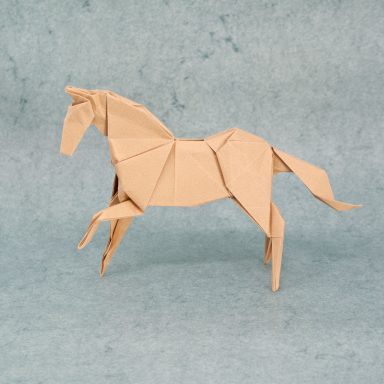Origami History
So What is Origami?
Origami is the ancient art of folding paper, believed to have originated in Japan. Origami has existed for a very long time; however, it is not until the middle of the 20th Century that it started to expand beyond the basic traditional, or practical models.
Since then, origami has massively expanded in its scope and complexity all around the world but despite that it is still at heart, the art of taking (usually) a single square of paper and making “art” without (normally) the use of cuts or glue.
As part of this expansion even the basic definitions have evolved to use non square paper, or multiple sheets to make even more diverse models
Most people make use of origami or origami derived objects on a daily basis without ever realising that they do so. Satellite communications, vehicle air-bags, even surgical stents all have elements of origami in their designs, but if you ask most people if they have any experience of origami the most likely answers will be paper aeroplanes or the “fortune teller” they learned in school.
So the question is how would you start to learn to “do” origami, and even more to the point, why would you want to - what are the benefits of origami?
©Copyright. All rights reserved.
We need your consent to load the translations
We use a third-party service to translate the website content that may collect data about your activity. Please review the details and accept the service to view the translations.







